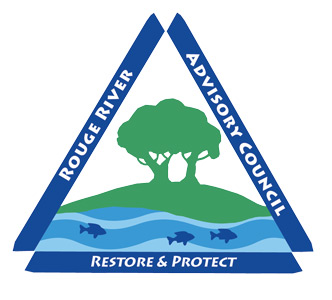Rouge River Advisory Council (RRAC)
 About the RRAC
About the RRAC
The Rouge River Advisory Council (RRAC), formerly the Rouge River Remedial Action Plan (RAP) Advisory Council, was founded in 1993 to advise the Rouge River Remedial Action Plan Team on RAP issues. Work on “The Rouge River Strategy” was started in October 1985. It later became the Rouge River RAP, and was completed and adopted by stakeholders in 1989. The RAP described actions needed to clean up and preserve the Rouge River, and set out a 20-year plan to accomplish these goals. Michigan’s RAP process required that the RAP be updated every two years. A technical group known as the “RAP Team” was formed in 1993 to revise the RAP (1992 RAP Progress Report, 1994 RAP Update, 1998 RAP Progress Report, 2004 RAP Revision).
In 2008, the RRAC developed the Delisting Targets for Fish and Wildlife Habitat & Population Beneficial Use Impairments (BUIs) for the Rouge River Area of Concern (AOC). The RRAC continued to support and advocate for activities in the Rouge AOC that would benefit the large
population within its boundaries and has been a visible member at the annual AOC and Statewide Public Advisory Council (SPAC) meetings, sharing its lessons learned and is a cooperating partner in the Alliance of Rouge Communities (ARC).
In 2016 the RRAC focused time and effort on developing the final management action Rouge AOC Habitat Project list for the removal of the Habitat BUIs. In 2018 the list was approved by both the Michigan Department of Environment, Great Lakes, and Energy (EGLE) and the U. S. Environmental Protection Agency (USEPA) as the remaining projects needed to be completed in order to remove the Habitat BUIs and move the Rouge River towards delisting.
RRAC is responsible for advising EGLE on the update and implementation of the Rouge RAP and over the years have formed a number of subcommittees to deal with more specific issues such as habitat destruction, nonpoint source pollution (such as stormwater runoff), on-site sewage disposal, public education, contaminated sites, and headwater land use. They also act as liaison with the public at large and with interest groups to ensure that there is adequate public participation in the RAP process.
The mission of the RRAC is to assist in the attainment of the goals of the RAP by enhancing public awareness and education concerning RAP issues, providing a mechanism for the participation of all interested parties, seeking broad-based support for the RAP update, assisting in implementation of the Rouge RAP, and independently evaluating progress toward the goal of restoring designated uses and delisting the Rouge River watershed as an Area of Concern (AOC). In 2022 the RRAC Bylaws were updated to better serve the mission and goals of the RRAC.
.jpg) Rouge River AOC Map
Rouge River AOC Map